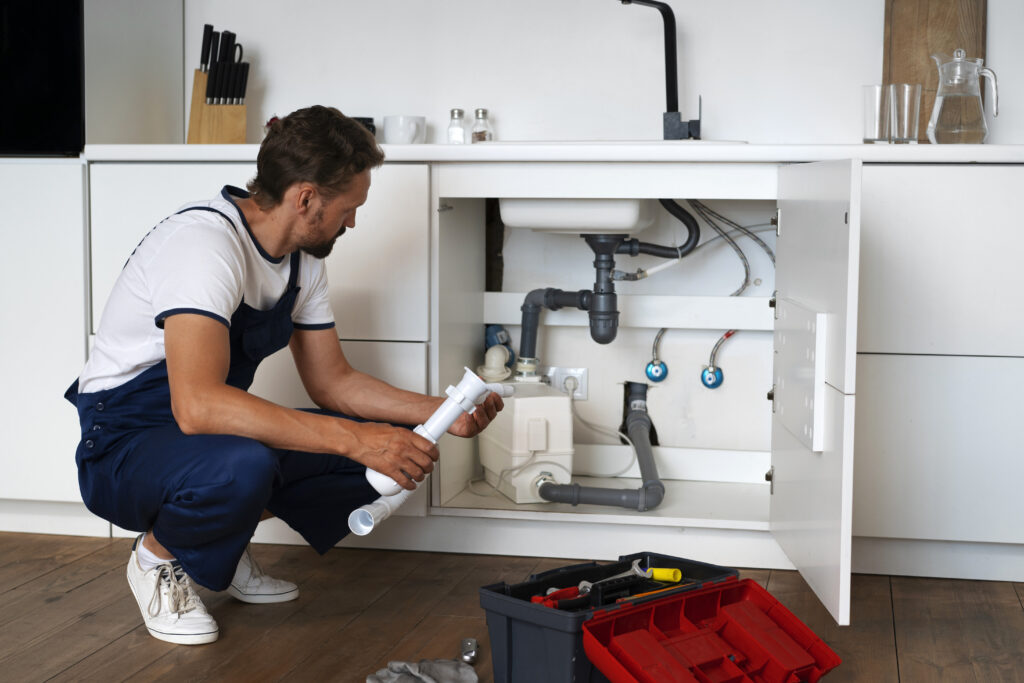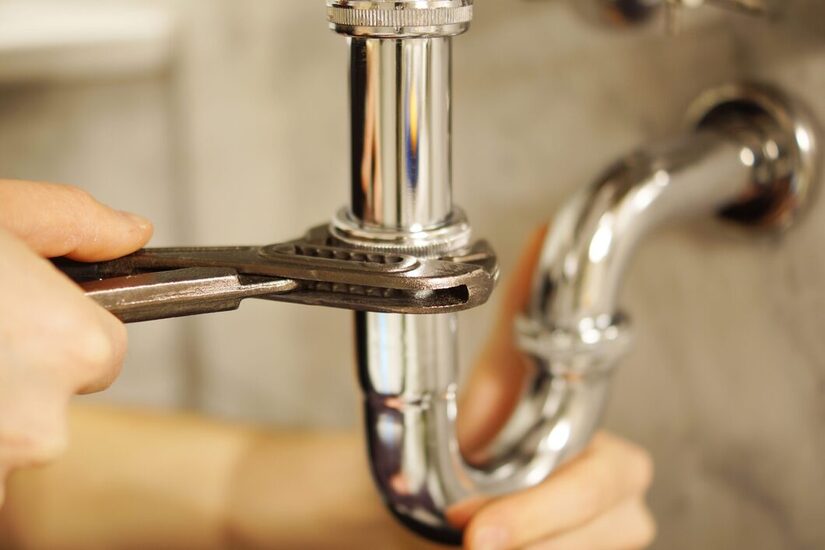Plumbing looks simple from the outside, but once you get into the field, whether as a trainee, DIYer, or beginner contractor, you quickly realize it’s a hands-on job that relies heavily on the tools you use.
You can know how a plumbing system works, but without the right tools in your hand, that knowledge won’t get you very far.
This guide is here to walk you through the tools every beginner plumber should have. It’s not just a list. It’s a breakdown of what each tool does when you’ll use it, and why it matters. If you’re building your first toolkit or wondering what to buy, start here.
Why The Right Tools Matter
From tightening pipe fittings to sawing through steel pipes, every task has a tool that makes it easier, cleaner, and safer.
Using the right tool for the job:
- Reduces leaks and damage
- Saves time on installs and repairs
- Let you work safely in tight or awkward spots
- Prevents costly mistakes from using the wrong tool
When you’re just starting out, it’s easy to get overwhelmed by all the choices. But you don’t need to buy everything. Start with the tools you’ll use every week and then add as you go.
Must-Have Hand Tools For Beginners
These are the tools you’ll use daily. They handle basic plumbing tasks like loosening fittings, connecting pipes, and making adjustments in tight spaces.
- Pipe Wrench: A heavy-duty wrench for gripping and turning metal pipes. Use in pairs, one for holding, one for turning. Get a 10-inch and a 14-inch to cover most jobs.
- Adjustable Wrench:For nuts and bolts of all sizes. You’ll use it to tighten compression fittings or remove faucet parts. Keep at least two on hand—a 6-inch and a 10-inch.
- Basin Wrench:For working behind sinks where regular wrenches can’t reach. If you’re installing or removing a faucet, this is the tool you’ll need.
- Slip-Joint Pliers & Tongue-and-Groove Pliers (Channel Locks):For gripping, twisting, and tightening. Channel locks are great when you need a wide grip and lots of pressure.
- Plumber’s Tape (Teflon Tape): A small but important item. Wrap around threaded pipe joints to create a seal and prevent leaks. Always keep a few rolls in your bag.
- Screwdrivers (Flathead & Phillips): Many plumbing parts are held in place with screws. A good set of screwdrivers is essential for tasks like removing covers, tightening fittings, or adjusting valves.
- Hacksaw: Sometimes you’ll need to cut through pipes or metal hardware. A hacksaw makes it easier to cut plastic, copper, and even screws. Keep extra blades on hand—cuts are cleaner when the blade is new.
Cutting And Shaping Tools
When you’re installing new plumbing or modifying existing lines, clean cuts and smooth edges are key. That’s where these tools come in.
- Pipe Cutter: Cuts clean, even cuts on copper and PVC pipes. Faster and more accurate than a hacksaw, and reduces the risk of leaks from rough edges.
- Tubing Cutter: A smaller version of the pipe cutter. For soft metal tubing and tight spaces.
- Deburring Tool: After a pipe is cut, the edge can be rough or sharp. This tool smooths it out so fittings can be attached properly. Skipping this step can cause poor seals and slow leaks.
When you use the right cutting tool and prep the edges right, you reduce wear on your fittings and extend the life of the system.
Inspection And Safety Tools
Not all problems are visible. And some jobs put you in cramped, dirty, or even hazardous conditions. That’s why beginners need a few tools that focus on visibility and safety.
- Pipe Inspection Camera: Flexible camera on a long cable to look inside drains, walls or underground pipes. Find clogs or cracks without tearing anything apart.
- Leak Detector: Simple pressure gauges or more advanced electronic devices to find hidden leaks. If the system is losing pressure and you can’t see where this tool will save you a lot of time.
- Personal Protective Equipment (PPE):
- Gloves: Protect your hands from cuts, chemicals, and hot pipes
- Goggles: Protect your eyes from debris, dust, and splashes.
- Knee Pads: When you’re working on hard floors, these prevent strain and bruising.
Working smart also means working safely. These tools help you avoid injury while getting a better view of the problem.
Power Tools For Faster, Heavier Work

Some plumbing tasks are too tough or too time-consuming for hand tools. That’s where power tools step in. These aren’t always necessary at the very beginning, but they’re worth knowing about as you build experience.
- Cordless Drill: Used for drilling holes through walls, studs, and tiles. Also useful for driving screws when installing brackets or fixtures. Look for one with a strong battery and adjustable speed.
- Cordless Drill: Used for drilling holes through walls, studs, and tiles. Also useful for driving screws when installing brackets or fixtures. Look for one with a strong battery and adjustable speed.
- Cordless Drill: Used for drilling holes through walls, studs, and tiles. Also useful for driving screws when installing brackets or fixtures. Look for one with a strong battery and adjustable speed.
Conclusion
Every plumber, no matter how experienced, starts by learning the tools of the trade. The right tools help you do better work, build confidence, and solve problems faster. Start with the basics, keep learning, and take care of your tools, and they’ll take care of you in return.
Whether you’re fixing a leak in your own home or stepping onto your first job site, this guide gives you a clear place to begin. Once you’re comfortable with these tools, you’ll be ready to take on bigger challenges with less stress and more skill.


